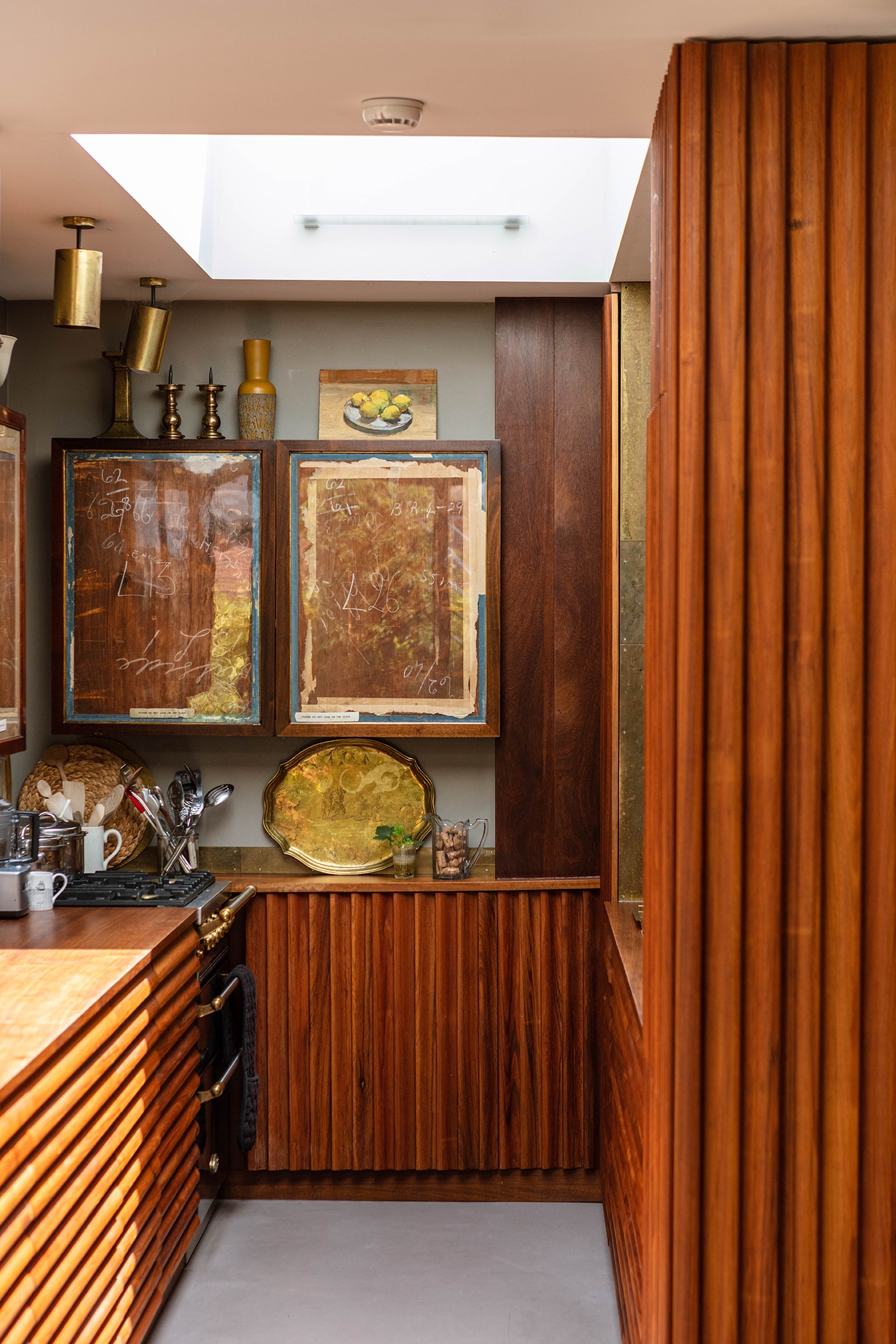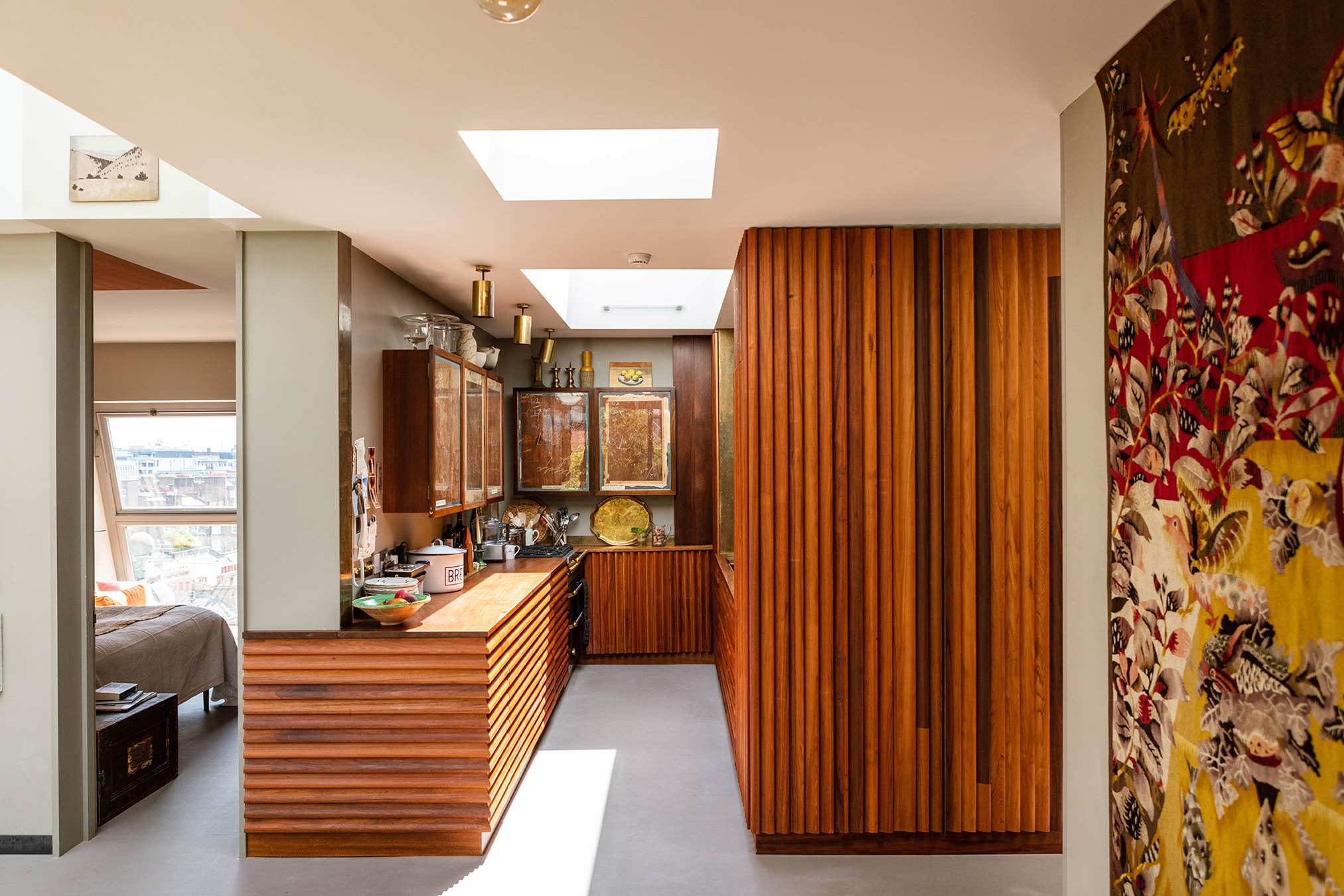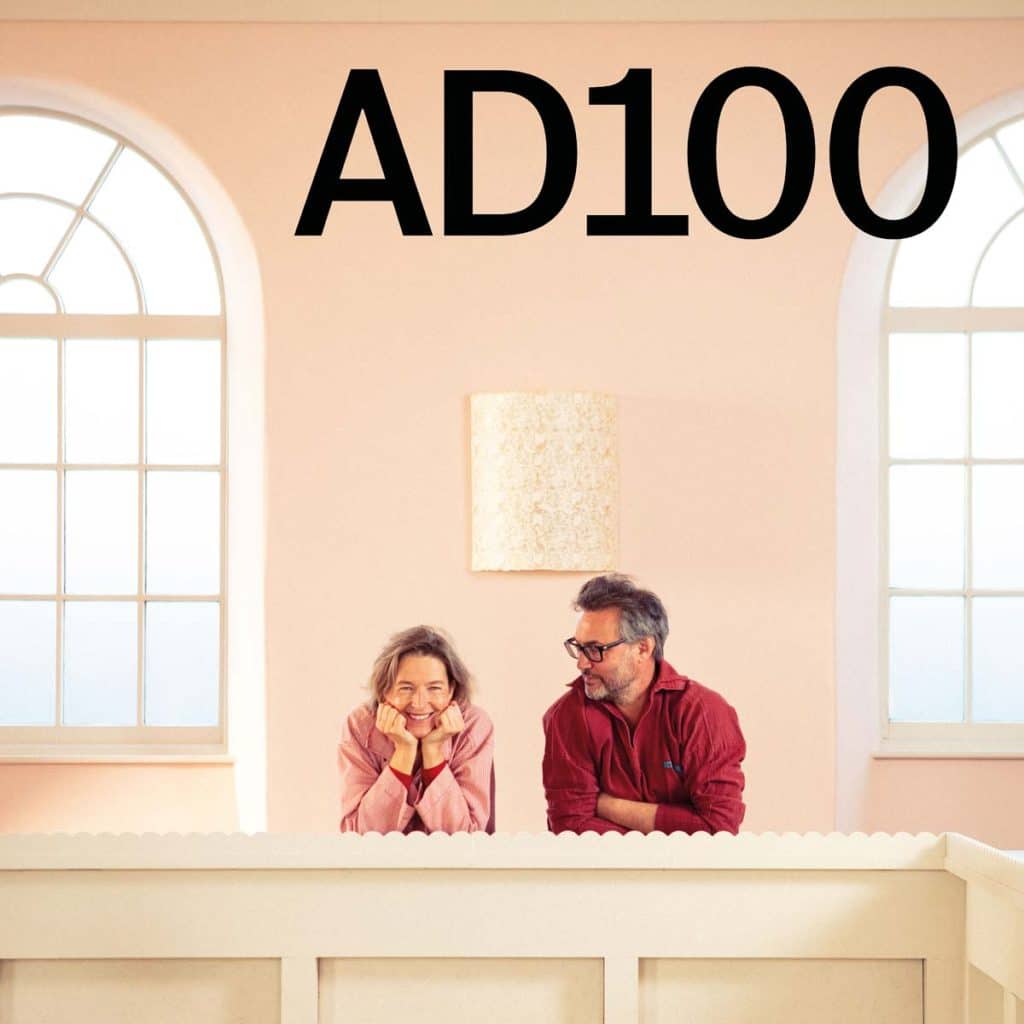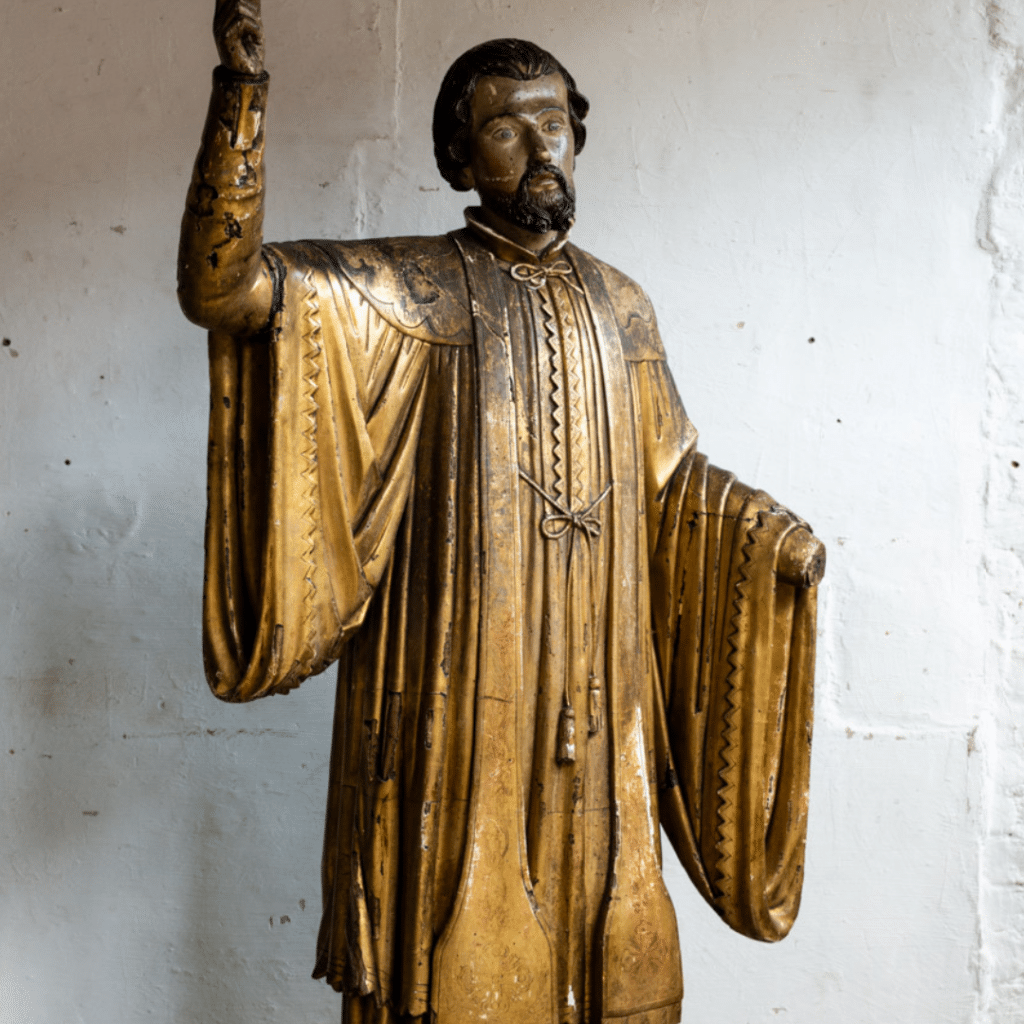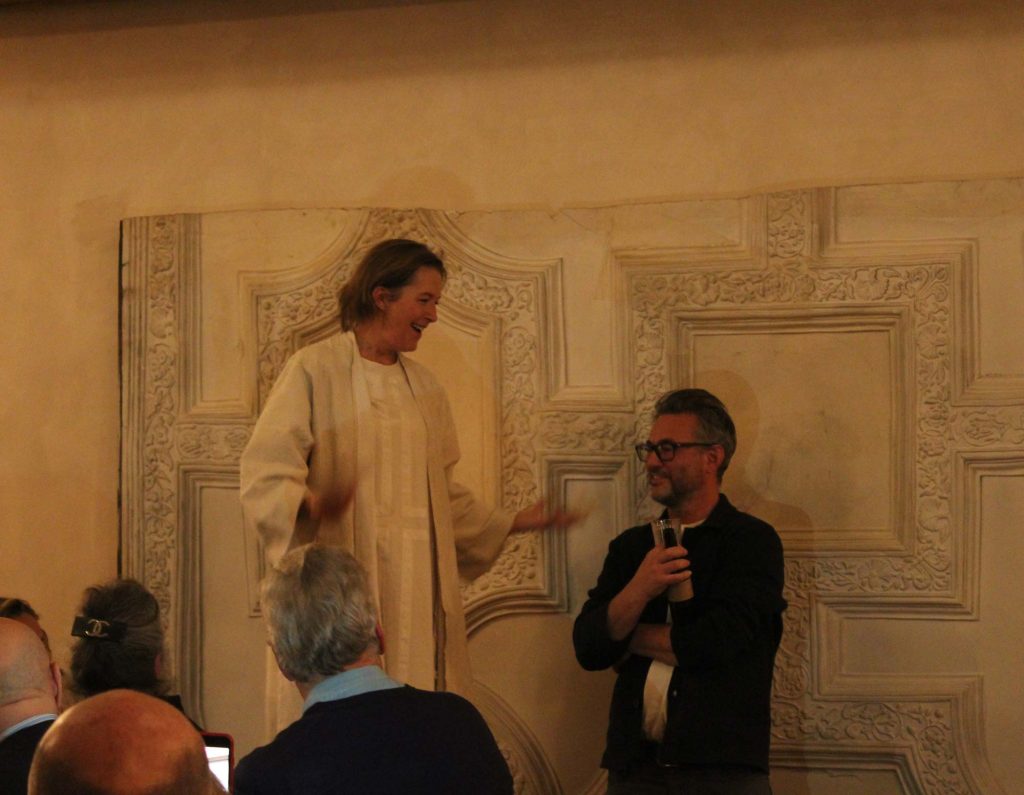How salvaged museum frames have been reinvented in both art and interior design.
At Retrouvius we’re often asked where our materials come from – and just as often, we’re amazed by where they go.
These beautiful wooden frames, which we salvaged from a leading London museum archive system and sold to Kent based artist Jemimah Patterson, are an inspiring example of the journeys materials can take when given a second life.
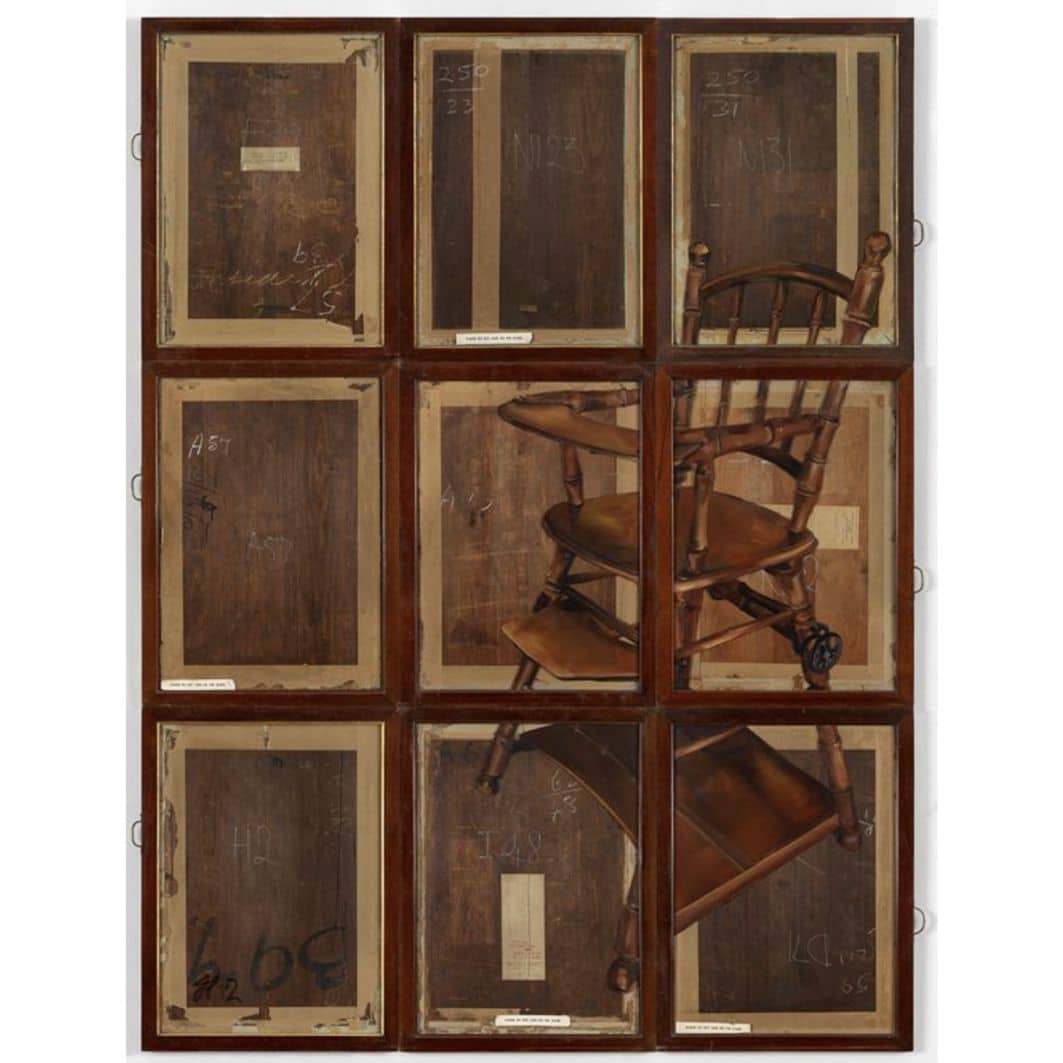
Jemimah used the frames as a foundation for one of her hyperrealist works (pictured above). Known for her exploration of institutional memory – the highchair painted in oils on top of the lead glass within the frames, subtly echoes Patterson’s personal history as a conjoined twin – a meditation on connection, separation and identity.
“I wanted to use the backs of frames as a way to talk about what’s hidden – what’s forgotten or undocumented”, Jemimah explains. “Retrouvius’ salvaged stock was the perfect medium to give these pieces a double life”.
And we absolutely love Jemimah’s ingenuity. You can see more of Jemimah’s work in her website or Instagram page.
Our very own design studio has made extensive use of frames we have salvaged – and in a recent project reimagined their use as cabinet fronts in a bespoke kitchen. The project, completed for a residential client, retained the same visible marks and cataloguing codes that once helped archivists identify museum pieces. Rather than sanding or repainting, we wanted to celebrate the aged surfaces – letting them become conversation pieces in their own right.
The result? A kitchen that doesn’t just serve function but tells a story. The drawers and cupboards carry the quiet authority of history – and are a perfect example of how our design studio uses architectural salvage to create not just sustainable but soulful design.

